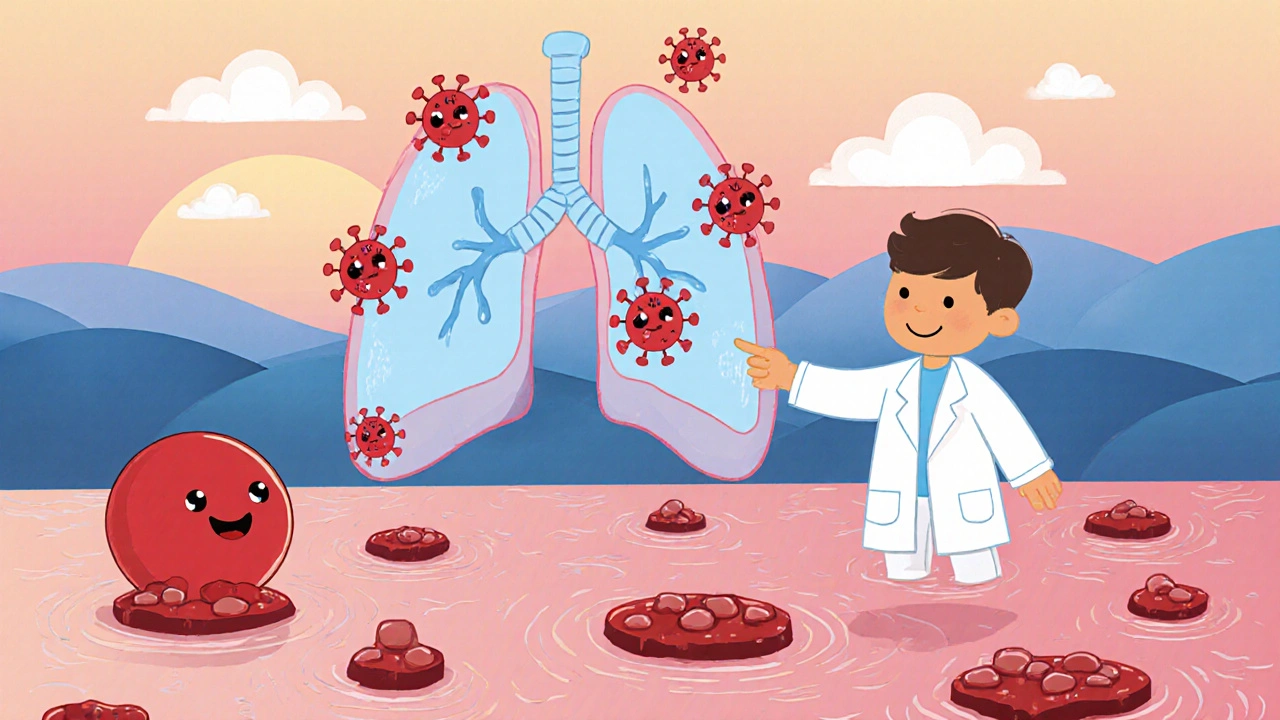Blood Thinners: What They Do and How to Stay Safe
Blood thinners can prevent strokes, clots and save lives. But they also change how your body handles bleeding. If you or someone you care for is on a blood thinner, simple daily choices matter. This page gives clear, no-nonsense advice on common medicines, key risks, and practical safety steps you can use right away.
Types and how they work
There are two main kinds: anticoagulants and antiplatelets. Anticoagulants (like warfarin, apixaban, rivaroxaban) stop clotting proteins from making a clot. Antiplatelets (like aspirin, clopidogrel) keep platelets from sticking together. Doctors pick one based on why you need it—atrial fibrillation, deep vein thrombosis, pulmonary embolism, or a mechanical heart valve, for example.
Warfarin needs regular blood tests (INR) and has food and drug interactions. Newer direct oral anticoagulants (DOACs) such as apixaban and rivaroxaban usually need less monitoring but depend on kidney function. Your doctor will explain which fits you best.
Practical safety tips
Carry a list of your medications and put a medical ID in case of an emergency. Tell every provider, dentist or pharmacist that you take a blood thinner before any procedure. Even routine dental work or minor surgery may need a plan.
Watch for warning signs: heavy or unusual bleeding, large bruises, blood in urine or stool, coughing up blood, or severe headaches and weakness. If you notice any of these, get medical help right away.
Be careful with over-the-counter drugs: NSAIDs like ibuprofen and naproxen increase bleeding risk. Many antibiotics, some antidepressants, and certain herbal supplements (ginkgo, garlic, high-dose fish oil) can interact with blood thinners. Always check with your prescriber before starting anything new.
If you take warfarin, keep your vitamin K intake steady—don’t suddenly load up on leafy greens. Your provider will tell you how to manage diet and INR checks. For DOACs, renal function matters; bring recent lab results to appointments.
Missed dose? For most DOACs take it as soon as you remember if it’s the same day; don’t double up. For warfarin, follow your clinic’s guidance. When in doubt, call your clinic or pharmacist rather than guessing.
Before travel or long flights, pack enough medication, a printed list of your meds, and contact details for your doctor. If you have falls or trauma while on a blood thinner, seek prompt medical evaluation even if you feel okay at first.
Pregnancy and breastfeeding change options. Warfarin can harm the fetus; low-molecular-weight heparin is often preferred in pregnancy. Talk to your provider early if pregnancy is possible.
Blood thinners work well when used carefully. Know your medicine, watch for signs of bleeding, and keep open communication with your healthcare team. That simple approach keeps you safer and more in control.
Learn how COVID-19 respiratory infections change clotting risk and what you must do when blood thinners interact with antiviral drugs, plus practical management tips.
Coumadin (warfarin) is a blood thinner prescribed to prevent clots, and it comes with a lot of rules. This article explains how Coumadin works, why dosing is tricky, what to eat (and avoid), how to stay safe, and the daily realities of living on this medication. It covers everything from INR monitoring to real facts about food and drug interactions, giving you practical advice for dealing with Coumadin in everyday life.


